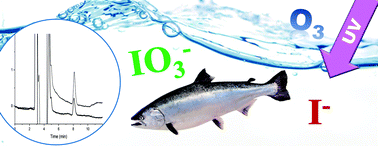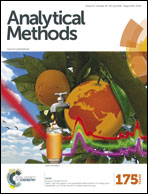A simple and sensitive method for the determination of iodide and iodate in raw, ultraviolet- and ozone-treated aquacultural seawater samples using ion chromatography coupled to an ultraviolet detector
Abstract
A new ion chromatographic method for the speciation of iodine in aquacultural seawater samples has been developed. This simple, isocratic, non-suppressed ion chromatographic method, which uses an electrolytically generated potassium hydroxide eluent with a high capacity anion exchange column (Dionex IonPac AS20, 250 × 4 mm ID, 7.5 μm), allows the direct injection of undiluted seawater samples, with detection based upon standard ultraviolet absorbance (226 nm). Using a sample injection volume of 125 μL, a method limit of detection for iodide of 9.45 nM in seawater was achieved, with an absolute detection limit of 0.15 ng. Speciation (iodide/iodate) was accomplished via off-line sample reduction using ascorbic acid (0.2 M) and HCl (6 M). The new method was applied to the study of iodine speciation in raw, ultraviolet- and ozone-treated aquacultural seawater samples.


 Please wait while we load your content...
Please wait while we load your content...